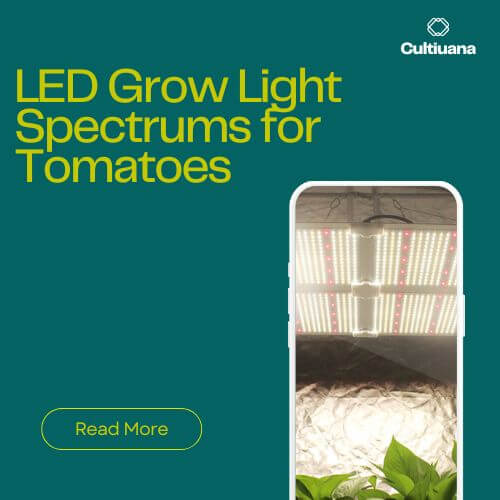
How Far Should LED Grow Lights Be From Plants
The LED grow lights have bulb-like light distribution, with stronger intensity in the center and weaker intensity towards the edges. This explains why the PPFD (photosynthetic photon flux density) is not as high at the four corners of the grow tent compared to the center.

image credit: researchgate.net
To address this, some growers place supplemental lighting at the sides of the grow tent to make up for the lower light levels in those areas. These supplemental lights help ensure that all the plants receive the necessary amount of light for healthy growth.
Speaking of the hanging distance, as a result, when LED grow lights are hung higher, they cover a wider area, but fewer photons reach the plant's leaves. This is because photons tend to dissipate as the height increases.
Specifically, as the height increases, the illuminated area expands, and a significant amount of light falls on non-plant surfaces like the floor, racks, and walls, resulting in wasted light.
During different growth stages, plants require a certain amount of light to sustain photosynthesis. Therefore, it's important to adjust the distance between the lights and plants based on the desired light intensity for optimal growth.
How Far Should LED Grow Lights Be From Plants

Plants need more than just water, nutrients, carbon dioxide, temperature, and humidity to grow. The light they receive also plays a crucial role in their growth. So how far should LED grow lights be from plants?
The answer lies in understanding the concept of PPFD (photosynthetic photon flux density). PPFD refers to the number of photons that reach the plant's leaves and directly influences their growth.
Because plants require a specific level of PPFD during each stage of their growth to sustain successful photosynthesis, and it varies throughout different stages of plant growth.
As a result, we must adjust the distance between the grow lights and the plants accordingly to provide the plants with the optimal PPFD. By doing so, we ensure that the plants receive the right amount of light energy needed for their specific stage of growth.
To find the optimal hanging height, we need to consider two key factors:
Growth Cycle: Different growth stages require different PPFD levels. Seedlings and young plants have different light requirements compared to mature plants during flowering or fruiting. It's important to understand the specific needs of your plants at each stage:
Seedlings:300-500PPFD
Vegetatative:600-900PPFD
Flowering:1000+ PPFD
Light Intensity: LED lights emit different intensities of light. Some lights may be more powerful and require a greater distance from the plants, while others may be less intense and can be hung closer. The following data can be used as a reference:
240-400w LED Grow Lights:16-30”
450-550w LED Grow Lights:20-30”
600-850w LED Grow Lights:24-26
900w+ LED Grow Lights:26-42”
By considering these factors together, we can determine the appropriate height for hanging our LED grow lights and ensure that our plants receive the right amount of light for their specific growth stage.
There is another way to adjust LED grow lights and meet our plants' specific light needs.
Modern LED grow lights now come with convenient knob controls that allow us, as individual growers, to easily adjust the power percentage. By tweaking this power percentage, we can achieve the desired PPFD values we mentioned earlier, ensuring our plants get the right amount of light for their growth.
This clever feature ensures that our plants receive the optimal light ratio for their growth, eliminating the need for constant height adjustments.

However, when it comes to large-scale commercial cultivation with hundreds of LED lights, or when plants are grown in racks, constantly adjusting the height of each light becomes impractical. That's where led grow light controllers come into play.
This smart system lets us manage all the lights in our grow room from one central point. It ensures that our plants receive the proper PPFD levels throughout their growth stages by precisely controlling the light intensity.
With this efficient approach, we can optimize our cultivation efforts and create the ideal conditions for our plants to thrive.

Once the lights are set at the right height or power level, we can easily check if our plants are getting the desired PPFD using a simple tool called a PAR Meter.
This device measures the light intensity and helps us ensure that it matches our plants' PPFD needs. It allows us to fine-tune our lighting setup and provide the perfect environment for our plants to grow and flourish.
What Happens When LED Lights Are Too Close to Plants?

image credit: mygardenlife
When it comes to hanging LED grow lights, finding the perfect distance is crucial for the optimal growth of your plants. If the lights are too close, the leaves can receive an excess of light, which can actually hinder their development. The light will burn the leaves that are under the grow lights, turning green leaves into yellow from the top.
On the other hand, if the lights are hung too low, they won't be able to cover a wide enough area, meaning you'll need more lights to cover your entire growing space. This can be costly and not very economical.
So, it's important to strike the right balance and find that sweet spot where the lights are at an ideal distance from the plants, ensuring they receive just the right amount of light for healthy growth while keeping your expenses in check.
What Happens If a Plant Has Too Little Light?
When we hang the grow lights too high, it creates a problem for our plants. They don't receive enough light, which directly impacts their ability to perform photosynthesis effectively. As a result, their growth rate is affected, and they may not reach their full potential.
Additionally, hanging the lights too high also leads to uneven distribution of light intensity within the coverage area. This means that some parts of the plants may receive more light than they need, causing them to progress to the next growth stage earlier than expected. On the other hand, other areas may receive insufficient light, causing delays in their growth.
This lack of uniformity in light distribution can be problematic, especially when aiming for a systematic and consistent production process. It becomes challenging to manage the growth and development of plants in a controlled manner.
Therefore, finding the right balance and ensuring that the grow lights are hung at an appropriate height is crucial. It allows for optimal light absorption, efficient photosynthesis, and consistent growth throughout the entire plant canopy. By achieving this balance, we can create an ideal environment for our plants to thrive and maximize their potential.




